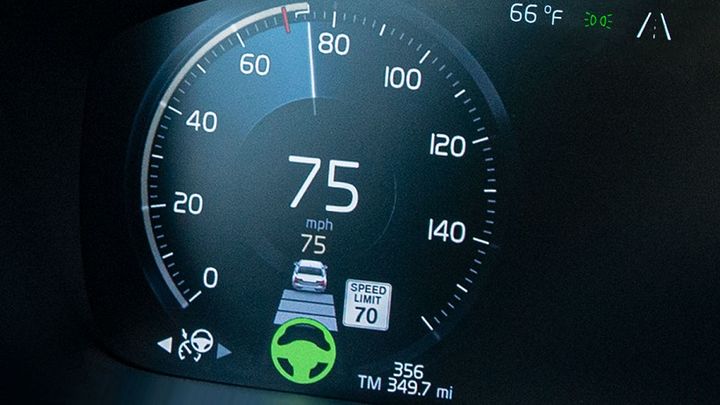Photo: IIHS
Adaptive Cruise Control is a more advanced version of traditional cruise control that uses sensors to calculate and maintain a preselected following distance from the vehicle ahead, eliminating the need for the driver to repeatedly brake and reset the system.
Drivers using adaptive cruise control (ACC) are substantially more likely to speed when using ACC – or a partial automation that combines that feature with lane centering – a new study from the Insurance Institute for Highway Safety (IIHS) found.
Drivers were found speeding more so when using the technology than when not using either solution, the study found. The study also found that drivers when selecting a speed to automatically follow, many drivers choose one that’s over the limit.
“ACC does have some safety benefits, but it’s important to consider how drivers might cancel out these benefits by misusing the system,” says IIHS Statistician Sam Monfort, the lead author of the study. “Speed at impact is among the most important factors in whether or not a crash turns out to be fatal.”
ACC is a more advanced version of traditional cruise control that uses sensors to calculate and maintain a preselected following distance from the vehicle ahead, eliminating the need for the driver to repeatedly brake and reset the system, IIHS said. With the addition of lane centering, the vehicle also maintains its position within the travel lane automatically.
Despite this, analysis of insurance claims data by the IIHS-affiliated Highway Loss Data Institute and other research indicate that ACC may lower crash risk. Other studies have shown that these systems maintain a greater following distance at their default settings than most human drivers and suggested that they reduce the frequency of passing and other lane changes.
To find out the impact ACC and lane centering technologies have on speeding, IIHS researchers analyzed the behavior of 40 drivers from the Boston metro area over a four-week period using data collected by the Massachusetts Institute of Technology’s Advanced Vehicle Technology Consortium.
Data from the study found that drivers were 24% more likely to drive over the speed limit on limited-access highways when those systems were turned on. IIHS said. The amount by which they exceeded the speed limit when they did speed was also greater when they were using the driver assistance features compared with driving manually.
ACC also had the largest impact on how much drivers exceeded the limit in zones where it was 55 mph. In these slower zones, they averaged a little more than 1 mph higher over the limit when using ACC or Pilot Assist than they did driving manually, said IIHS. ACC and partial automation users are at about 10% higher risk of a fatal crash, according to a common formula for calculating probable crash outcomes.
The study did not account for several other factors that have been shown to reduce crash frequency and severity, IIHS said. For instance, it’s possible that drivers who set their systems at higher speeds also selected a greater following distance.
Source: https://www.automotive-fleet.com
CUT COTS OF THE FLEET WITH OUR AUDIT PROGRAM
The audit is a key tool to know the overall status and provide the analysis, the assessment, the advice, the suggestions and the actions to take in order to cut costs and increase the efficiency and efficacy of the fleet. We propose the following fleet management audit.




